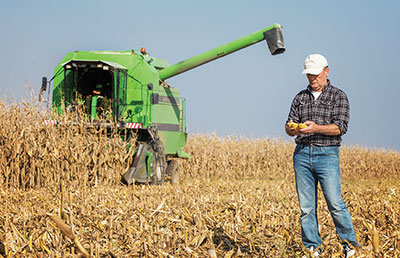What Is Adjusted Gross Income From Farming?

The Emergency Relief Program (ERP) has a payment limit of $125,000. However, if more than 75% of your adjusted gross income (AGI) is from farming, then you qualify for an extra $125,000 payment. Speciality crop farmers would qualify for up to $900,000 per producer.
However, what is farming AGI. Technically it is not gross income from farming. It is the net income generated by the farm compared to all of your other sources of income that is reported on your tax return. It is a three-year average of AGI. For the 2020 crop year it is years 2016-2018 and for 2021 it is years 2017-2019. You would compare the average of those three years of Farm AGI to the total Average AGI. If this number is greater than 75%, you qualify for the higher payment cap. If lower, you do not.
There is no allowance for special or extra-ordinary items. It is simply a review of the tax return to determine what AGI shows up there. You have to determine AGI at both the entity level and all owners. The entity can qualify but then each owner must qualify. For example, if Farm LLC has four equal owners and two owners have more than 75% of their AGI from farming and two don’t, then the extra $125,000 payment limit will be capped at $62,500.
The FSA Handbook 6-PL has some guidance but FSA is not in the role of being tax advisors. It is really up to the CPA or Attorney to determine what is AGI from farming within certain boundaries. To the best of our knowledge the following is Farm AGI:
- Net Schedule F income;
- Farm net income from an S corporation or partnership that flows into an individual return;
- Typically gains from selling farm equipment;
- Wages from farm entities;
- IC-DISC income from farm entities;
- Gains from selling farmland, breeding livestock and conservation easements;
- Reduced by farm related items such as self-employment tax deduction, retirement plan accounts and DPAD deductions for 2016 and 2017 returns. Post 2017 DPAD and 199A is not part of AGI.
The wage and IC-DISC allowance started with the 2020 crop year and the wages or IC-DISC must be from an entity materially participating in farming which means at least 50% of its gross receipts are from farming. This means that this income will qualify for ERP since this program is for 2020 and 2021 crop years.
The most difficult provision for CPAs and Attorneys deals with gains from equipment sales. There is a special rule that requires that farm income is more than 66.66% of overall AGI before you can include equipment gains. This can bounce out including this income in many situations especially tax years 2018 and later when trade-ins are now taxable. The examples in the handbook are vague at best and a CPA and attorney need to use their judgement in determining whether these gains qualify or not.
For income flowing from an S corporation or LLC taxed as a partnership, care must be taken to determine if there might be gains from equipment sales that do not necessarily qualify as farm income. You can’t simply rely on the number showing up on line 1 of Schedule K-1, etc.
Also income from packing, storing, processing, transporting and shedding of farm products will qualify as farm income. This will allow many vertically integrated specialty crop operations to qualify for the extra payment.
We have gotten confirmation from the local state office that if your overall AGI and farm AGI is negative, then you don’t qualify for the extra payment. This is based on the interpretation from the old WHIP+ rules which then became ERP. Many farmers tend to show low amounts of farm income since they don’t want to pay tax. If this applies to your farm situation, you may not qualify for the extra ERP payment.
For those farmers in separate property states, the CPA should be allowed to calculate your AGI and farm AGI based on if you had filed a married filing separate return. The outside income earned by the spouse can then be eliminated from the AGI calculations for the farmer allowing the farmer to qualify. This does not work for community property states.
The bottom line is that not all farmers will qualify for the extra payment limit. As a CPA or attorney, some judgement is required in determining farm AGI and Form FSA-510 cannot be finalized without the CPA or attorney providing the required letter. You cannot change your farm structure to qualify for an extra payment. This is all based on history that occurred no later than 2019 that was reported on your tax return. Changing your structure today will not help.
Paul Neiffer is a certified public accountant and business advisor specializing in income taxation, accounting services, and succession planning for farmers and agribusiness processors. Paul is a principal with CliftonLarsonAllen in Walla Walla, Washington, as well as a regular speaker at national conferences and contributor at agweb.com. Raised on a farm in central Washington, he has been immersed in the ag industry his entire life, including the last 30 years professionally. Paul and his wife purchase an 180 acre ranch in 2016 and enjoy keeping it full of animals.

What if your overall average AGI is not negative but your overall farm AGI is? Do they not qualify for the extra payment limit? I asked our County CED and the response was he could not find any reference in their handbooks regarding negative AGIs and ineligibility.